QLT GLASS SERVIES
Originally founded as Jiangsu Glass Bottle over 17+ years ago, Liquor Bottle Packaging International continues to lead the market in innovation. QLT glass continues to lead the market in true Specialty Brand development today.
What We Do
We are committed to providing our customers with high-quality, personalized, and professional services to meet their different needs and requirements. As a professional glass bottle supplier, customers can easily find the products and services they need on our website and receive high-quality after-sales support and service.

Never Price Increase
We would like to assure our customers that we do not engage in the practice of raising prices through hidden means or for any other reason. We believe in honest and transparent business practices, and we are committed to providing our customers with fair pricing and high-quality products and services. Our goal is to build long-term relationships with our customers based on trust and mutual respect.

Free Sample
Not only do we offer over 1,500 free samples, but we also have a large selection of bottles that come with molds. This means we can provide you with free molds, saving you money on tooling costs. We are committed to helping our clients save money while still receiving high-quality, customized products. Contact us today to learn more about our offerings and how we can assist you.
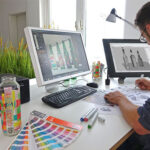
Free Design
Not every designer is qualified to design glass bottles, as the appearance of glass bottles requires a high level of expertise. When designing glass bottles, various factors must be considered, such as product weight, usage, ergonomics, cost, product structure, and whether the design meets current productivity standards and can be accurately produced by machines.
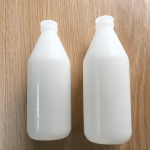
3D PRINT
Under normal circumstances, we create 3D models for products with unique bottle structures. If requested by the customer, we can also 3D print the bottle model to further study and improve it together with the customer. We believe that this collaborative approach helps us to achieve the best results and deliver high-quality, customized products that meet our customers’ specific needs and requirements.
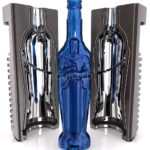
Packaging Mould
In our warehouse, we have over 1,500 molds for our range of glass bottles and over 5,000 molds for bottles and jars for other purposes. This means that you can save approximately one month of mold production time and thousands of dollars in tooling costs by not having to pay for the molds. We are committed to providing our customers with high-quality, cost-effective solutions that meet their unique needs and requirements. Contact us today to learn more about our offerings and how we can assist you.
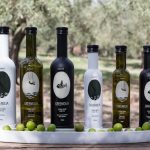
Printing Process of Glass Bottles
Thanks to advancements in printing equipment, silk screen printing technology has evolved from single-color to five-color printing. This means that a logo can now have up to five colors, which can be printed simultaneously during the printing process, much like using a household printer. In addition, we use the latest laser separation technology to achieve even finer details in silk screen printing. Click here to watch a video demonstration.
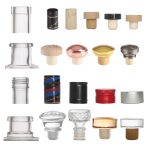
Accessry
We offer up to 100 different types of caps for you to choose from, including popular options such as natural cork, polymer cork, and glass caps. By selecting the appropriate cap to match the bottle, you can enhance the overall look and feel of the product and elevate its perceived value. We are dedicated to providing our customers with a wide range of options to ensure that they can find the perfect cap to meet their unique needs and requirements.
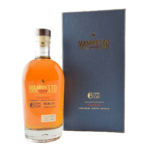
Decorate & Label
Proper packaging not only enhances the appearance and value of the product but also provides better marketing solutions to help your product stand out from the competition. We are committed to providing our customers with a variety of labeling and packaging options to meet their unique needs and requirements and help them achieve their marketing goals.

Gift & Promo
Common packaging options include color box packaging, wooden box packaging, paper tube packaging, and acrylic box packaging. Proper packaging not only enhances the appearance and value of the product but also provides better marketing solutions to help your product stand out from the competition. We are committed to providing our customers with a variety of packaging options to meet their unique needs and requirements and help them achieve their marketing goals.
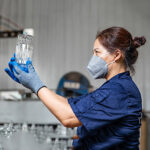
QC
Drawing on over a decade of manufacturing experience, we have developed and implemented our own Quality Control 8-step process, which has helped us to maintain a consistent level of quality and avoid any quality issues in recent years. Our commitment to quality starts from the very beginning, where we take steps to prevent any non-conforming products from entering the market and potentially harming your interests.
Our Quality Control team consists of 10 professionals, most of whom hold a graduate degree and have at least three years of experience in the field of quality control. We are committed to continuous improvement and regularly update our quality inspection processes to ensure that we remain at the forefront of the industry, meeting and exceeding our customers’ needs and expectations.
At our factory, quality is not just a buzzword; it’s a way of life. We take great pride in our products and are committed to delivering consistent, high-quality products that meet the highest industry standards and exceed our customers’ expectations.
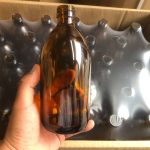
Cartons
Proper packaging not only enhances the appearance and value of the product but also provides better marketing solutions to help your product stand out from the competition. We are committed to providing our customers with a variety of labeling and packaging options to meet their unique needs and requirements and help them achieve their marketing goals.

Gift & Promo
Common packaging options include color box packaging, wooden box packaging, paper tube packaging, and acrylic box packaging. Proper packaging not only enhances the appearance and value of the product but also provides better marketing solutions to help your product stand out from the competition. We are committed to providing our customers with a variety of packaging options to meet their unique needs and requirements and help them achieve their marketing goals.

The bronzing process uses the principle of hot-pressing transfer to transfer the aluminum layer in the anodized aluminum to the surface of the substrate to form a special metal effect. Because the main material used for bronzing is anodized aluminum foil, bronzing is also called anodized aluminum hot stamping. Anodized aluminum foil is usually composed of multi-layer materials, the substrate is often PE, followed by release coating, color coating, metal coating (aluminum plating) and glue coating. Hot stamping does not mean that the hot stamping is golden. There are many kinds of hot stamping paper materials, including gold, silver, laser gold, laser silver, black, red, green, etc.
Screen printing refers to the use of silk screen as a plate base, and a screen printing plate with graphics and text is made by a photosensitive plate-making method.
Advantages of screen printing:
(1) Not limited by the size and shape of the substrate
(2) The layout is soft and the printing pressure is small
(3) The ink layer has strong coverage
(4) Suitable for various types of ink
(5) Strong optical rotation resistance
(6) Flexible and diverse printing methods
(7) Plate making is convenient, the price is cheap, and the technology is easy to master
(8) Strong adhesion
(9) It can be screen printed by hand or machine printed
(10) It is suitable for long-term display, and the outdoor advertising is expressive
Decal printing is to print transferable graphics on paper or plastic film coated with adhesive film to become decals or decals, stick it on the glass bottle, and then put it on the kiln. According to the requirements of different materials, after 400-500 °C, and even calcinations to temperatures of 800 °C, the desired color appears.
| This Process Is Perfectly Engraved With Precise Relief And Depth Onto The Mold. A Powerful Way For A Brand To Leave Its Imprint In The Glass, And Can Be Economical In Terms Of Development Fees. A Real Solution For Wine & Spirits Brands Who Want To Appropriate A Bottle And Sublimate Their Product. |
The frosted wine bottle is processed by the frosting process to form a hazy, noble and elegant visual effect, and the hand feeling is also more delicate and smoother than ordinary glass wine bottles. Frosted wine is particularly sensitive to temperature. For example, after frosting a wine bottle, it can not only quickly improve the product grade, but also effectively prevent the entry of light, avoid the reaction of light to the wine to the greatest extent, and better ensure the quality of the wine. , relatively prolong the shelf life of wine. Compared with other packaging types, frosted wine bottles have unique advantages in terms of practicality and production technology. There is a lot of competition in the beverage industry now. If you want to develop in the competition, you must increase your own design and increase or decrease in weight.
However, not only the winery, but also the cosmetic packaging industry also uses frosted bottles as the main material in the cosmetic packaging market, because of its noble and elegant appearance, it is ignorant of the majority of cosmetic consumers. The frosted glass surface has extremely fine frosted particles, which have a delicate hand feel, and the surface of the bottle exudes a luster like jade. Moreover, the stable characteristics of the glass itself can effectively prevent the chemical reaction between the cosmetic and the cosmetic bottle under the light irradiation, so as to better ensure the quality of the cosmetic.
Electroplating is the process of plating a thin layer of other metals on the surface of glass bottles using the principle of electrolysis. Improve reflectivity and increase aesthetics
The final stage of bottle or decanter decoration. Accessories can help reach the highest level. We have over 1000 free samples of wine bottle caps for you to choose.

8 steps of quality control
QC – Mold
- According to the product required by the customer, we can customize the corresponding material and quantity of molds.
- Ensure that the mold can be used correctly and on time.
- After use, responsible for the maintenance, repair, maintenance and management of the mold.
QC – Sample
- 1: Ensure samples are produced in time.
- Guaranteed sample quantity.
- Screen the quality of samples, find, propose and solve problems with relevant departments.
- Packing for samples.
- Choose international express with good reputation and moderate price.
- Make sure that the customer receives the sample in good condition.
- Other related work
QC – Raw Material
According to the material selected by the customer, choose the right time to produce on the machine.
QC – Mass Production
- Add production plan;
- Prepare the mold, package the mold complete and available;
- Cooperate with engineers to debug the mold until high-quality glass bottles are produced;
- Monitor the caliber, weight, height, diameter and other parameters of glass bottles to ensure that the drawings are correct;
- After the glass bottle is annealed and cooled, the product capacity, the tightness of the bottle mouth and the bottle stopper are measured.
QC – Mass Packaging
- According to the customer’s request, the packing quantity of glass bottles is packed.
- Ensure that the product is not damaged, defective, or lacking.
- Make sure there are no other foreign objects in the box.
- Make sure the boxes are neat and tidy on the pallet.
- The height of the pallet is strictly in accordance with the customer’s requirements, and the container space is not wasted as much as possible, so as to save the freight cost for the customer.
- Each pallet must be fixed with packing tape, and then wrapped with wrapping film to prevent moisture, dust and loss.
- After packing, put it in the designated area of the warehouse and wait for delivery.
QC – Transportation
- Ship on time.
- Make sure the container number and license plate number are correct before shipment.
- Make sure that the exterior of the container is not damaged and the interior is clean and free of foreign objects.
- Do not miss hair. Make sure that the quantity of the product is correct, the product model is correct, and the accessories such as bottle stopper, rubber cap, etc. are complete.
- Make sure the container is full without wasting space. Efforts to save costs for customers.
- After installing the seal, the delivery is complete. Organize photos during loading, archive.
QC – After Sale
- Assist customers to solve problems in the import and export process.
- Provide customers with a copy of the bill of lading in a timely manner.
- Assist customers to solve other problems in the process of purchasing glass bottles.

In the process of production and operation, such a situation may be encountered. The minimum order quantity for this product is 10,000, but for various reasons, I can only accept part of it first. In this case, we will save the part as delivery for customers free of charge, completely relieve your worries.

Good product, good price, and of course good service. If you have any questions about import and export of glass bottles, please can contact us.Whether you are pre-purchase or post-purchase
FAQ About QLT Glass Packaging
We can make samples, but to do so requires an investment from you of about US $1,000. This includes bottle mould fee, sample production fee and express fee, etc.
For custom superflint bottles, If we have stock, smaller MOQ.If out of stock, MOQ is 3000-50000pcs.
Symmetrical 750ml bottles can fit approximately 24K if they are packed with boxes, or roughly 27K if they are packed in bulk. Irregularly shaped 750ml bottles can usually only fit approximately 21K if they are packed in boxes. Roughly 60K standard 12 oz. beer bottles will fit in a 40HC.
Generally, yes. The MOQ is the minimum we must order from the factory. It is not required that we ship this all at once.
The base cost to produce a mold is roughly US $1,000 for a standard bottle. The greater the size and complexity of form, the greater will be the cost to produce the mold.
You can expect to receive your first container of bottles in 4-5 months provided that the process goes smoothly. This breaks down as follows: Samples usually take 4-6 weeks from the time the mold is ordered. If mold modifications are required, you can expect an extra 2-4 weeks to get new samples each time a change is made, depending on how busy the factory is. Once the sample is approved, it takes 3-4 weeks to complete the full set of production molds. We can usually schedule production within 2-3 weeks after. Shipping transit times range from 2.5 weeks for U.S. west coast to about 4-5 weeks for east coast ports.
Fusion offers a wide range of closures: metal screw cap (ROPP and stelvin), plastic screw cap, cork (synthetic or natural), etc. We can source just about any kind of closure you might need, and we can offer a range of tamper evidence functionalities.
There are many methods of providing tamper evidence on bottles. Some closures have breakaway rings on the bottom that come off when you unscrew the cap. Others utilize shrink-wrapped plastic or foil capsules around the bottleneck that must be torn off before the bottle can be opened. Metal twist off lug caps feature a safety button in the center that pops up once the bottle has been opened. Many liquor bottles simply have a piece of paper glued across the closure to the bottle surface that gets torn in the process of opening the bottle.
Fusion offers two labeling options, including printed labels that are glued to the outside of the bottle, and ceramic heat transfer printing, a method of applying a decal to the bottle that gets baked into the surface of the glass. The cost of the label generally depends on the number of colors and the size of the label. We also offer acid etching, or frosting, for a decorative pattern, or as an overall treatment. Further, we offer custom bottle coloration via food-safe spray coating, a process that bakes externally applied color into the surface of the glass. Alternatively, color may be added directly to the glass material during production, but coloration of this sort only applies in situations involving extremely high quantity production runs.
Generally, bottles are either packed in reusable cardboard boxes with dividers, or they are packed in bulk on cardboard trays on pallets. Packing in boxes gives added protection to bottles during transit, and is often better for bottles that we ship prelabeled. We can offer varying degrees of cardboard quality and can have the boxes custom printed with a client’s corporate or product-specific branding. Customers frequently choose this option, because it allows them to reuse the shipping boxes for the sale of their product. The cost of a box depends on the overall size, the quality of the cardboard, the number of colors required for printing, and the size of the area to be printed. Bulk packing helps bring down the unit shipping cost by allowing a greater number of bottles to be packed in a single container.
Given the inherently fragile nature of glass, there will almost certainly be breakage during transit, but it is usually minimal (losses of less than 1%). You only need to provide relevant evidence of the damaged bottle, and we will make up for the loss in your next shipment
The best way to begin the design process is to survey the current market offerings to get a feel for the style of bottle that you want. From there, we can provide design assistance and develop drawings and specifications based on your requirements. If you have designs ready, please be sure to supply us with vector art drawings to work from (e.g. AI, DWG, CDR). In conceiving your design, please bear in mind that design elements such as sharp edges, corners and unusual shapes will add significantly to the complexity of the manufacturing process, which will in turn add to the overall production costs.
No. Unless they are well sealed, there is no way to guarantee that the bottles would remain sterile during transit. If sterilization is required, it is better to do it near or at the bottling facility, just before filling.
Yes, we advise that clients clean the bottles prior to filling.
Hot filling is a process used to increase the shelf life of a bottled food product. Hot filling at high temperatures can cause the glass to crack or explode due to the temperature variation between the internal and external surfaces of the bottle. Adding extremely hot liquid to a bottle causes the interior surface of the glass to heat up and expand quickly, while the outer surface remains at room temperature and does not expand. The stress that results from the exposure to these extreme temperature differences can cause breakage.
When filling the bottles with hot liquid, what is the maximum suggested temperature difference between the bottle and the liquid? 42ºC is usually the maximum we will guarantee. While higher temperature differentials are often manageable, we will not guarantee anything greater. If your particular hot filling process will involve a greater temperature differential, then we suggest that the bottles be preheated so as to avoid the possibility of significant breakage during filling.
Bottles shapes can be protected with design patents. It is possible to copy a patented bottle and not violate the patent if the shape and size of the bottle are changed slightly from the existing design. Bottles can also be trade-dressed. This is similar to a trademark, and it means that other companies are prohibited from using the same bottle shape and label style for the same product. However, one could sell a different product in the same shape bottle and not violate applicable trade dress.
We work with a variety of vendors who proved a range of glass quality options. Average flint glass has a slight grey or greenish tint to it. This is the most common type of translucent glass. Higher quality flint glass has better clarity, but is more expensive as a result. Ultra premium “super flint” has the highest quality and clarity, and is thus the most expensive, but super flint is the standard glass from which bottles for premium spirits, particularly vodka, are made.
The glass itself has no lead or other harmful chemicals. Upon request, QLT can have the bottles tested at an independent test facility to confirm. The ink used for the labels often has lead and/or chromium to increase the vibrancy of the colors. Since the labels are not on a surface that comes in contact with the food product, there are no regulations prohibiting the use of lead or chromium. However, upon request, QLT can use inks with no lead or chromium
All of the our vendors use varying levels of recycled glass. The amount used depends on the target glass quality (recycled glass lowers quality) and the requirements of the customer. The highest quality glass will use about 10% recycled material. Lower quality glass has a maximum of about 40% recycled material.
Yes,we can.We could offer various printing ways: screen printing, hot stamping, decal attachment, frosting, sandblasting, etc.
Yes,you can.Our Samples are only free for the customers who confirm order. But the freight for express is on buyer’s account.
Yes, we can. But the quantity of each ordered item should reach our MOQ.
EXW – Ex Works. This is the cost at the vendor door. No shipping of any kind is included in the price.
FOB – Free On Board cost. This is the cost of the product on a vessel at the FOB location. It means that freight from the vendor to the vendor’s port including all export duties and clearance fees have been paid.
CIF – Cost with Insurance and Freight. This is the cost of the product shipped to the CIF port (nearest to the customer) but does not include import duty, customs clearance fees, or domestic shipping to the final location.
DDU – Delivery, Duties Unpaid. This the cost including door to door shipping, but not including import duties or customs clearance fees.
DDP – Delivery, Duties Paid. This the cost of the product door to door including everything.
We can make samples, but to do so requires an investment from you of about US $1,000. This includes bottle mould fee, sample production fee and express fee, etc.
For custom superflint bottles, If we have stock, smaller MOQ.If out of stock, MOQ is 3000-50000pcs.
Symmetrical 750ml bottles can fit approximately 24K if they are packed with boxes, or roughly 27K if they are packed in bulk. Irregularly shaped 750ml bottles can usually only fit approximately 21K if they are packed in boxes. Roughly 60K standard 12 oz. beer bottles will fit in a 40HC.
Generally, yes. The MOQ is the minimum we must order from the factory. It is not required that we ship this all at once.
The base cost to produce a mold is roughly US $1,000 for a standard bottle. The greater the size and complexity of form, the greater will be the cost to produce the mold.
You can expect to receive your first container of bottles in 4-5 months provided that the process goes smoothly. This breaks down as follows: Samples usually take 4-6 weeks from the time the mold is ordered. If mold modifications are required, you can expect an extra 2-4 weeks to get new samples each time a change is made, depending on how busy the factory is. Once the sample is approved, it takes 3-4 weeks to complete the full set of production molds. We can usually schedule production within 2-3 weeks after. Shipping transit times range from 2.5 weeks for U.S. west coast to about 4-5 weeks for east coast ports.
Fusion offers a wide range of closures: metal screw cap (ROPP and stelvin), plastic screw cap, cork (synthetic or natural), etc. We can source just about any kind of closure you might need, and we can offer a range of tamper evidence functionalities.
There are many methods of providing tamper evidence on bottles. Some closures have breakaway rings on the bottom that come off when you unscrew the cap. Others utilize shrink-wrapped plastic or foil capsules around the bottleneck that must be torn off before the bottle can be opened. Metal twist off lug caps feature a safety button in the center that pops up once the bottle has been opened. Many liquor bottles simply have a piece of paper glued across the closure to the bottle surface that gets torn in the process of opening the bottle.
Fusion offers two labeling options, including printed labels that are glued to the outside of the bottle, and ceramic heat transfer printing, a method of applying a decal to the bottle that gets baked into the surface of the glass. The cost of the label generally depends on the number of colors and the size of the label. We also offer acid etching, or frosting, for a decorative pattern, or as an overall treatment. Further, we offer custom bottle coloration via food-safe spray coating, a process that bakes externally applied color into the surface of the glass. Alternatively, color may be added directly to the glass material during production, but coloration of this sort only applies in situations involving extremely high quantity production runs.
Generally, bottles are either packed in reusable cardboard boxes with dividers, or they are packed in bulk on cardboard trays on pallets. Packing in boxes gives added protection to bottles during transit, and is often better for bottles that we ship prelabeled. We can offer varying degrees of cardboard quality and can have the boxes custom printed with a client’s corporate or product-specific branding. Customers frequently choose this option, because it allows them to reuse the shipping boxes for the sale of their product. The cost of a box depends on the overall size, the quality of the cardboard, the number of colors required for printing, and the size of the area to be printed. Bulk packing helps bring down the unit shipping cost by allowing a greater number of bottles to be packed in a single container.
Given the inherently fragile nature of glass, there will almost certainly be breakage during transit, but it is usually minimal (losses of less than 1%). You only need to provide relevant evidence of the damaged bottle, and we will make up for the loss in your next shipment
The best way to begin the design process is to survey the current market offerings to get a feel for the style of bottle that you want. From there, we can provide design assistance and develop drawings and specifications based on your requirements. If you have designs ready, please be sure to supply us with vector art drawings to work from (e.g. AI, DWG, CDR). In conceiving your design, please bear in mind that design elements such as sharp edges, corners and unusual shapes will add significantly to the complexity of the manufacturing process, which will in turn add to the overall production costs.
No. Unless they are well sealed, there is no way to guarantee that the bottles would remain sterile during transit. If sterilization is required, it is better to do it near or at the bottling facility, just before filling.
Yes, we advise that clients clean the bottles prior to filling.
Hot filling is a process used to increase the shelf life of a bottled food product. Hot filling at high temperatures can cause the glass to crack or explode due to the temperature variation between the internal and external surfaces of the bottle. Adding extremely hot liquid to a bottle causes the interior surface of the glass to heat up and expand quickly, while the outer surface remains at room temperature and does not expand. The stress that results from the exposure to these extreme temperature differences can cause breakage.
When filling the bottles with hot liquid, what is the maximum suggested temperature difference between the bottle and the liquid? 42ºC is usually the maximum we will guarantee. While higher temperature differentials are often manageable, we will not guarantee anything greater. If your particular hot filling process will involve a greater temperature differential, then we suggest that the bottles be preheated so as to avoid the possibility of significant breakage during filling.
Bottles shapes can be protected with design patents. It is possible to copy a patented bottle and not violate the patent if the shape and size of the bottle are changed slightly from the existing design. Bottles can also be trade-dressed. This is similar to a trademark, and it means that other companies are prohibited from using the same bottle shape and label style for the same product. However, one could sell a different product in the same shape bottle and not violate applicable trade dress.
We work with a variety of vendors who proved a range of glass quality options. Average flint glass has a slight grey or greenish tint to it. This is the most common type of translucent glass. Higher quality flint glass has better clarity, but is more expensive as a result. Ultra premium “super flint” has the highest quality and clarity, and is thus the most expensive, but super flint is the standard glass from which bottles for premium spirits, particularly vodka, are made.
The glass itself has no lead or other harmful chemicals. Upon request, QLT can have the bottles tested at an independent test facility to confirm. The ink used for the labels often has lead and/or chromium to increase the vibrancy of the colors. Since the labels are not on a surface that comes in contact with the food product, there are no regulations prohibiting the use of lead or chromium. However, upon request, QLT can use inks with no lead or chromium
All of the our vendors use varying levels of recycled glass. The amount used depends on the target glass quality (recycled glass lowers quality) and the requirements of the customer. The highest quality glass will use about 10% recycled material. Lower quality glass has a maximum of about 40% recycled material.
Yes,we can.We could offer various printing ways: screen printing, hot stamping, decal attachment, frosting, sandblasting, etc.
Yes,you can.Our Samples are only free for the customers who confirm order. But the freight for express is on buyer’s account.
Yes, we can. But the quantity of each ordered item should reach our MOQ.
EXW – Ex Works. This is the cost at the vendor door. No shipping of any kind is included in the price.
FOB – Free On Board cost. This is the cost of the product on a vessel at the FOB location. It means that freight from the vendor to the vendor’s port including all export duties and clearance fees have been paid.
CIF – Cost with Insurance and Freight. This is the cost of the product shipped to the CIF port (nearest to the customer) but does not include import duty, customs clearance fees, or domestic shipping to the final location.
DDU – Delivery, Duties Unpaid. This the cost including door to door shipping, but not including import duties or customs clearance fees.
DDP – Delivery, Duties Paid. This the cost of the product door to door including everything.
The absolute volume of the container when filled to the rim.
See Applied Ceramic Labeling
A brown-colored glass used principally for beer, medicine and liquor containers. The color decreases the effect of some forms of light which would be injurious to the contents of the container.
A controlled temperature process in which glass is gradually cooled in ovens or lehrs to avoid the creation of stresses and strains within the glass due to natural or uneven cooling. The annealing temperature in glass is about 1000 degrees F.
Colored lettering or design of a ceramic nature fused onto bottles. Employs screen printing to transfer glass frit (pow- dered glass colorant) to the surface of a bottle or glass container. The design is fired, heated in a lehr, and becomes permanently fused.
A closure with a cork lower and a usually an upper made from plastic, metal or wood. It may also refer to the neck finish that matches this type of closure.
The mixture of ingredients used to make the molten glass. The batch for soda lime glass consists primarily of silica sand, sodium carbonate (known as soda ash), calcium oxide (lime), magnesium oxide, and aluminum oxide.
The sloping edge of a container or part. A bevel adds a short flat span at the junction of two sides of a container.
All design aspects that are applied after the bottle itself has been produced. This includes coloration, frosting, decal baking, labeling, and any other modifications.
Pre-printed, heatshrink foil or plastic tube that fits over the neck of the bottle and closure and provides tamper evidence.
Similar to applied ceramic labeling, this is a process that uses a printed decal affixed to the surface of the glass. The glass is fired, heated in a lehr, and becomes permanently fused.
A narrowed or constricted opening in the neck of a container.
Any structure or device designed to close off the opening of a container and prevent loss of its contents.
A deep blue glass coloured by adding cobalt compounds.
The last stage in glass-container production which consists of inspecting the containers for defects, labeling the containers, and packaging the containers for shipment.
An uninterrupted protruding helix on the neck of a container to hold a screw-type closure. Continuous thread finishes have GPI finish designations in the 400 series.
This is a crimped closure. Flutes are pressed into the flaring skirt of a shallow metal disk, which holds an inner disk of resilient lining material that forms the actual seal.
Crushed recycled glass that is added to the glass furnace.
Raised design or lettering on the surface of the glass.
A method of frosting the surface of a glass bottle by exposing it to a solution of concentrated acid.
The level to which a container must be filled to furnish a designated quantity of the contents.
Flint glass is optical glass that has relatively high refractive index. The term flint derives from the flint nodules found in the chalk deposits of southeast England that were used as a source of high purity silica.
A method of bottle decoration that gives the surface of the glass a frosted look. Frosting can be accomplished by decal labeling or by acid etching.
A cylindrical mass of molten glass that is cut off as it extrudes from the furnace. The gob is directed into the mold where it is shaped.
Glass Packaging Institute – an American standards organization which helps set standards for bottle necks and closures.
The first stage of glass-container production which typically employs high amounts of heat to produce and shape a glass container.
A treatment to improve the chemical resistance of the inside surface, usually accomplished through the injection of a sulfuror fluorine containing gas mixture into bottles at high temperatures. The treatment renders the container more resistant to alkali extraction, which can cause increases in product pH, and in some cases container degradation.
A continuous-belt oven for the annealing of glass, and for fusing of ce- ramic color onto glass.
Interrupted thread finishes with the GPI finish number designations in the 2000 series. Lug caps are often used for jars and for ketchup bottles.
Plastic closures with a surface deposit of aluminum coated with lac- quers to render a decorative metallic effect.
The configuration of a container top shaped to accommodate a closure.
Preliminary form of the final container that is produced after the gob gets shaped in the first stage mold.
A seal that cannot be opened without partially destroying the cap or otherwise showing evidence of tampering.
The concave indentation at the bottom of a bottle – most commonly found on wine bottles.
Shipping container in which empty unit containers are received and intended to be used as shipping containers for the product packaged in the unit containers.
Rolled On Pilfer Proof cap
See Capsule
See flint glass
A method of adding color to the surface of a bottle by spraying the surface and then baking the color into the glass. Spray coloration can be done in a multitude of colors, intensities and gradations.
The Stelvin(R) neck finish can be found on some glass wine bottles. It is a screw thread finish designed to accomodate the Stelvin(R) closure, an aluminium cap with a tamper evident breakaway band. Offers prod- uct preservation, a modern look and practicality.
A closure or liner system incorporating a feature that visually indicates if the closure has been removed or the product has been exposed. Removal of the closure or liner system activates the indicating feature.
A projecting bead on the outer surface of some glass containers, usu- ally just below the finish, to provide a surface of engagement for the jaws of handling devices during manufacture.
A borosilicate glass which releases the least amount of alkali. It is commonly used for pharmaceutical or fine chemical products that are sensitive to PH changes.
A soda lime glass (Type III) that has been de-alkalized by treating the interior surfaces to eat away the alkali on or near the glass surfaces. The undesirable characteristic of Glass is that the treating etches the surface, causing a frosted appearance.
A soda lime glass and the most common in use. Type III is compatible with most items: food, beverages, common chemicals, etc.
This is the cost at the vendor door. No shipping of any kind is included in the price.
Free On Board cost. This is the cost of the product on a vessel at the FOB location. It means that freight costs from the vendor to the vendor’s port including all export duties and clearance fees have been paid.
Cost with Insurance and Freight. This is the cost of the product shipped to the CIF port (nearest to the customer), but it does not include import duty, customs clearance fees, or domestic shipping to the final location.
Delivery, Duties Unpaid. This the cost including door to door shipping, but not including import duties or customs clearance fees.
Delivery, Duties Paid. This the door-to-door cost of the product with everything included.
